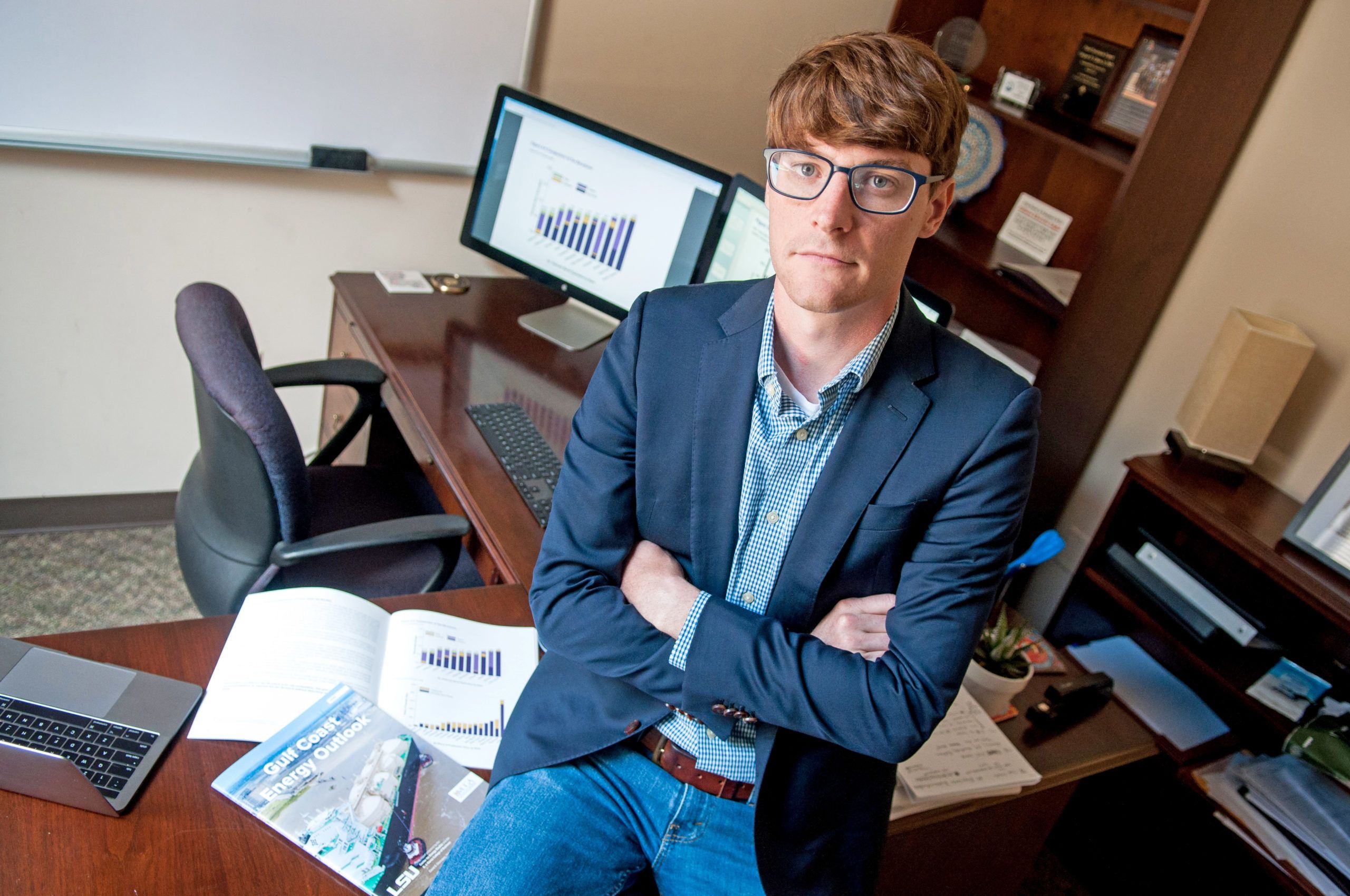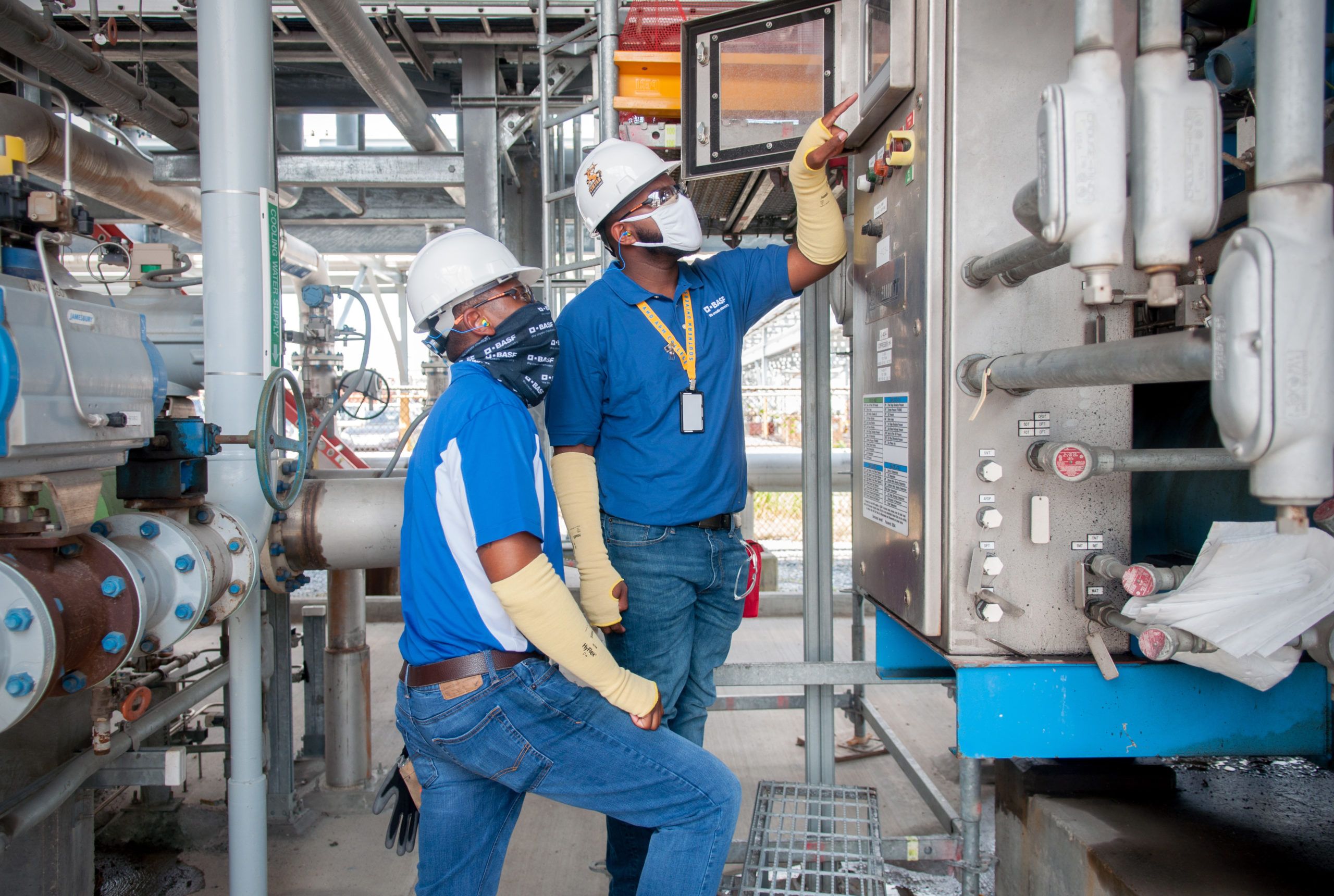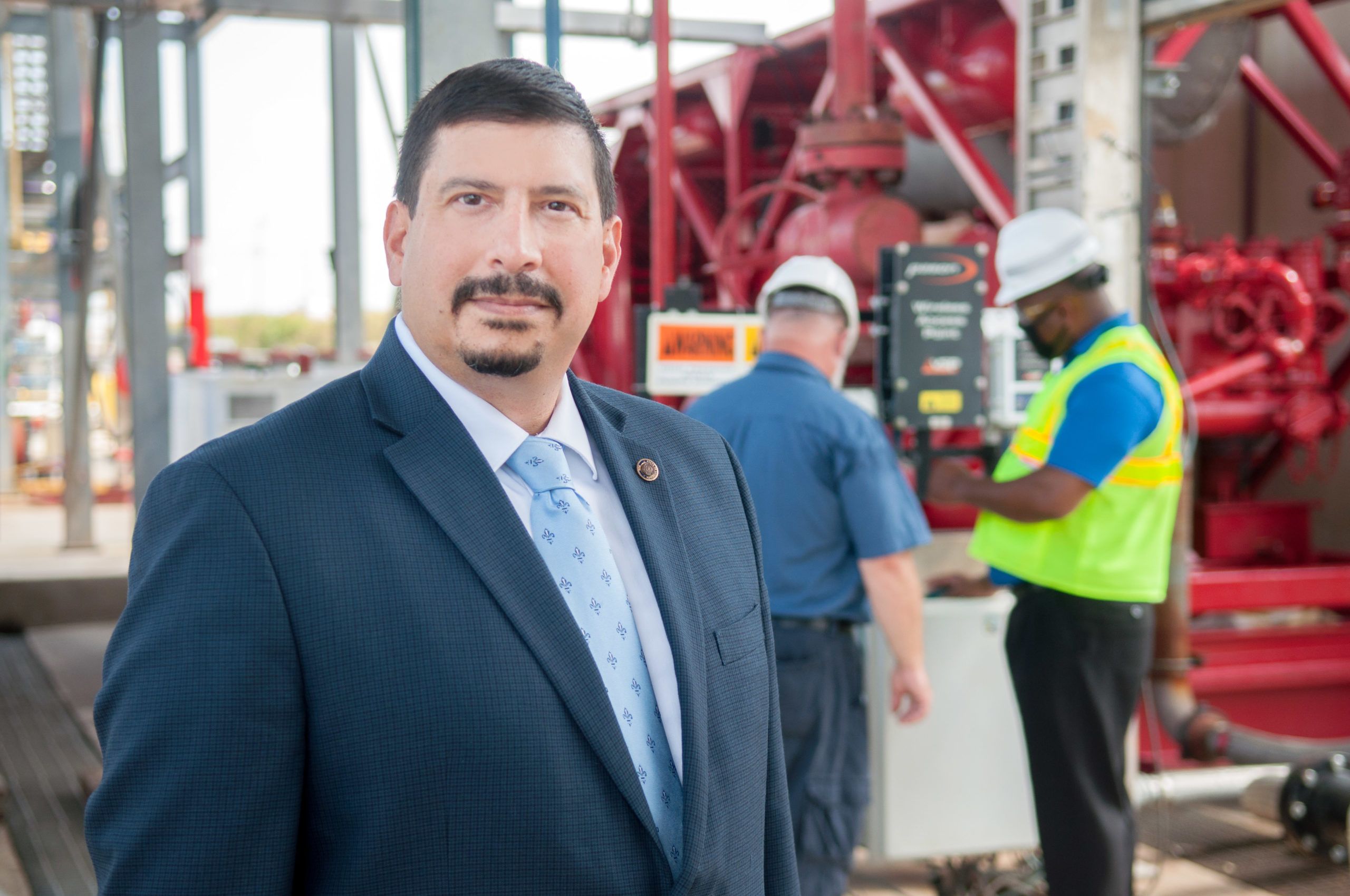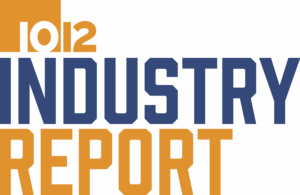There was really no way to plan for this. The COVID-19 pandemic knocked Louisiana’s industrial community back on its heels and sent it scrambling to find answers in a new reality—and that’s in a region that has already battled storms, spills, floods and various other monkey wrenches over the years.
It’s not the first time one of his economic forecasts has ended up in the “circular file,” says economist Loren Scott of Loren C. Scott & Associates in Baton Rouge, but while hurricanes Katrina and Rita were “like two rifle shots at New Orleans and Lake Charles, COVID-19 has been more like buckshot with a lot more uncertainty associated with it.
“It’s not just impacting certain areas,” Scott says. “It’s the entire state, country and world.”
Louisiana’s construction sector was hit particularly hard, losing some 25,000 jobs, or nearly 17% of its total statewide workforce earlier this year. That affected Baton Rouge and Lake Charles the most, as each supports the highest concentration of industrial contractors in the state.
The reason? The refining industry screeched to a halt and slashed its construction workforce as fuel consumption dropped some 42% over a three-week period last spring. “In reaction, the refineries laid off their contracting workforce and said, ‘We’re going to handle maintenance and repair for the next few months,’” Scott says. Additionally, many capital projects were postponed until 2021.
RELATED STORY: Digitization is no longer optional
Should the pandemic be around for months or even years, and fuel demand remain depressed, many refineries could be in jeopardy. Fuel consumption has rebounded somewhat in recent months, but jet fuel continues to lag far below projections and refineries are struggling. That could become a troublesome long-term problem should people choose to permanently work from home. “Calcasieu Refinery in Lake Charles is shut down and nobody knows when it will re-open,” Scott says. “Even the larger ones are struggling.”
One thing seems certain: A tidal wave of maintenance work will likely arrive in 2021 as many plants pull the trigger on a pandemic-induced backlog of turnarounds. “These huge firms postponed their turnarounds into 2021, and that will be piled on top of the other turnarounds already scheduled,” Scott says. “That translates into 1,000s of workers needed in the Baton Rouge area alone. Some contractors will go from a surplus worker situation to a shortage.”
As for upstream oil and gas, Mike Moncla, interim president of the Louisiana Oil & Gas Association and owner of Moncla Cos. in Lafayette, says there’s little doubt there will be more bankruptcies before year’s end. Oil and gas owners were already in crisis mode in early 2020 and COVID-19 made things exponentially worse. “Simply put, we need higher oil prices … $40 oil is not good for anybody,” Moncla says. “There are oil companies saying they can break even at $35, but that’s not sustainable for the services side. It’s going to take some consolidation on both the service and operator sides for things to improve.”
Moncla says the situation can’t be compared to the 1980s oil bust, as there were some 30 drilling rigs operating in south Louisiana and oil companies had offices in Lafayette. “Those old offices are now retail shops, and there’s not 30 rigs drilling … there’s zero. If we had 30 rigs drilling today, that would be like a boom.”

As for the chemical industry, Greg Bowser, president of the Louisiana Chemical Association, says his sector wasn’t impacted as severely in the beginning, but that’s changing as the pandemic drags on. The demand for products is gradually declining as society makes permanent adjustments to its spending habits.
In the meantime, LCA has become a physical presence for many of its member owners who are now working from home. “In this pandemic, they’re spending more time on Zoom calls, whereas we’re more in touch with people in government etc.,” Bowser says. “We’ve become their ground game … their physical presence.”
Looking at the long term
LCA plans to urge legislators to closely evaluate the state’s inventory and utilities sales taxes in order to alleviate the burden somewhat on industrial owners. It’s an ongoing concern that has worsened during the pandemic.
“If you manufacture products that you can’t sell (due to depressed demand), then that becomes inventory and is hit with the inventory tax,” Bowser says. “Other states don’t have that, and it can be substantial.”
Nonetheless, he admits that convincing the state to make tax changes right now is a tall order, as the general fund is already reeling from reduced oil and gas revenues. Greg Albrecht, chief economist in the Louisiana Legislative Fiscal Office, says even though oil has stabilized since its precipitous drop into negative territory last April, tax revenues in the fourth quarter of FY 2020 (April, May and June), “were just horrible” compared to the same period in 2019. Sales and motor fuels tax revenues, for example, were 14% and 25% lower, respectively, than in 2019.
While a recent uptick in oil prices could help boost the mineral revenue side of the equation, it’s still a far cry from the $60 a barrel price originally projected for FY 2020, and every dollar below the estimated price removes $10 million from the general fund. Due to that and other factors, Albrecht’s office reduced general fund estimates by $137 million for FY 2020 and by $900 million for FY 2021. “I’m hoping we were super conservative and that we’ll be able to add money back, but I’ve got to see more improvements in the economy.”
Albrecht is optimistic that oil prices have stabilized for now, but doesn’t expect any big upswings. “The industry seems to be reconciling itself to the fact that $40 oil is going to be the price band for the foreseeable future,” he adds. “Not much is going to increase that price in a hurry. We will recover, we’re going to adapt, but that could be some years down the road.”

Greg Upton, assistant professor of research at LSU’s Center for Energy Studies, agrees that oil prices will likely remain where they are for some time. Unlike previous forecasts, he expects that long-term behavioral and cultural changes stemming from the pandemic could have a unique influence on demand.
“A lot of the workforce has moved home, and even when the pandemic subsides they’re probably going to go to hybrid schedules,” Upton says. “It has forced them to make adjustments and they’re realizing that it actually works.”
That would result in a seismic shift in demand composition and force industrial owners to re-think their long-term strategies. “A refinery takes inputs (crude oil) and adjusts their output over time, depending on where the demand is,” he adds. “If the composition of demand changes over the long term (lower demand on jet fuel, diesel etc.), that could impact the Gulf Coast market’s competitiveness.
That would undoubtedly dampen expectations for any impending industrial construction boom, although “you could see another round of capital expenditures down the road when economic activity picks back up.”
Upton says demand-side factors in Asia, not the U.S., will have the most significant impact, particularly in regard to natural gas. “If Asia growth picks back up and comes out of this quickly, that’s going to be the demand needed to drive all of the activities here in the U.S.,” Upton says. “China and India have a strong incentive to transfer to gas due to air quality concerns, and natural gas has lower carbon emissions.
“The question is whether it’s cheaper to find it locally or ship it as LNG. There’s a lot of politics that impact that.”
Zoom: Not a sustainable substitute
Meanwhile, the plants, jobsites and offices of Louisiana have experienced a profound paradigm shift in the midst of the pandemic, and most will never be the same. LCA’s Bowser says plant work cultures have changed in a fundamental way.
“I think you’re seeing a different structure from an administrative perspective,” Bowser says. “You have a number of folks that work from home, or on alternating days. Half of the administrative crew might be here today, the other half on Wednesday, etc.”
It has forced most plants to become more efficient in order to minimize person-to-person contact. “For some companies, it’s actually working out better,” he adds. “They’re finding some of their employees are actually more productive off site.”
Tom Yura, COO at Cornerstone Chemical in Waggaman, says the pandemic prompted his plant to question its entire workforce approach. Other than its direct operations workforce, everyone at Cornerstone works at home either full time or under a hybrid schedule, including customer service, finance, accounting, etc. The plant has also reduced the number of third party contractors on site.
“We’re questioning who is coming into the plant and why,” Yura says. “That has been an interesting outcome that I didn’t expect. Who would have thought you could have so many people working remotely and still be effective? COVID-19 has challenged some of our own paradigms.”
They’ve also expanded their hiring reach. “It has helped us as a recruiting tool,” he adds. “If I want to reach out to candidates outside my immediate geographical region, I now have access to some incredibly talented people who can’t move to the New Orleans or Baton Rouge areas. It increases our candidate pool and allows me to retain people and work with them in whatever life situation they’re in.”
To compensate for a reduction in group interactions, Cornerstone schedules additional virtual meetings, and establishes and monitors deadlines to keep everyone on track. “There are some inherent deadlines that we have to meet,” Yura says. “Monthly closings, customer demand and delivery schedules all work to keep you going. The meetings play a vital role in keeping everyone updated on how they’re doing.”
Even so, Yura issues a warning: While Zoom and other methods provide an effective means of communication for the short term, he worries about the long-term implications on relationship building.
“Humans want and need contact,” he adds. “You’re not seeing any negative consequences right now, but what if we did this for another three years and you never got to sit down and spend face-to-face time with your colleagues, and get to know that person, what they need, etc.
“From a leadership perspective, social interaction and two-way communication are very important. We’re going to have to find ways to bring that back. Zoom meetings are no real substitute for that.”
In fact, maintaining productivity over the long haul has been a concern for many during the pandemic. Brown & Root of Baton Rouge outlined specific work practices intended to maintain productivity levels even as its crews practiced social distancing and other safety protocols.

COO Fred McManus says there were some unavoidable issues in the beginning, as owners severely limited workforce numbers, but productivity is now back to pre-pandemic levels.
Throughout the pandemic, maintenance work has continued to be a stable source of work for the company. “We’ve learned to live and work in that environment,” he adds. “They were difficult adjustments in the beginning, but now that those practices are in place our productivity isn’t being impacted.”
There have been some unexpected benefits as well—for example, the strain on the local labor force has vanished. “The resource pool is as good as it has been in a decade, and we’re finding a better quality of worker as a result,” McManus says. “We’re ramping up on a couple of projects right now and having no difficulty finding the 400 workers we need. Resource availability is an upside for us, because more and better people are available today.”
Companies are also paying less in “per diems” because they’re not pulling workers from beyond the immediate area. The other upside: Brown & Root has reduced its overhead by shuttering 40% to 50% of its leased jobsite office space. That’s made them more competitive. “We’ve realized that we can take care of so many of our functions remotely,” McManus says.
They’re even planning for the long-term, and could possibly invest in new technology so that designers can more easily work from home. “At present, about 30% to 40% of our design work has to be done at the office because that’s where the technology is,” he adds.
Training and recruitment
Training and recruitment in the industrial space has experienced a paradigm shift of its own. Associated Builders & Contractors’ Pelican Chapter in Baton Rouge has staggered its schedule to accommodate the new realities of COVID-19 and student enrollment numbers are now determined by actual need.
And instead of filling up the PMAC with hundreds of corporate booths and students, LSU’s Fall Career Expo in September occurred in a virtual SIMCity-like setting and avatars took the place of real people.
Jesse Downs, director of LSU’s Olinde Career Center, attributes current lower-than-average participation rate to a late start in planning but says there’s also some hesitancy among the companies.
That’s because many owners, particularly in the industrial market, are struggling to define their recruiting strategies. Downs warns that this could cause problems down the road. “If you stop recruiting altogether during periods of uncertainty, you’ll pay for that when the market rebounds,” she adds. “The strategy for many of them is to reduce their recruiting but not eliminate it altogether.”
Sarah Haneline, BASF-Geismar’s director of workforce development, says while her plant’s leadership had some serious discussions in March and April about whether to cancel its Summer 2020 internship program, they ultimately decided to move forward with a hybrid schedule that included work both at the site and virtually. BASF-Geismar typically averages 20-25 chemical and mechanical engineering interns, but in the summer of 2020, there were only eight.
“It was a struggle to give them the best experience,” Haneline says. “After all, they’ve already spent so much time in the classroom. An internship is supposed to provide an ability to see, hands on, the equipment they’ve studied about, or see how our chemistry works.”

A hybrid schedule just wasn’t possible, however, for BASF’s Process Technology internship program this fall, as the positions are exclusively hands-on in nature. The Geismar site currently has five P-Tech interns (similar to previous years), mostly from River Parishes Community College, Baton Rouge Community College and area technical schools.
ExxonMobil in Baton Rouge made some swift adjustments to keep its inaugural craft internship program moving forward this past spring. Kelly McCloskey, human resources advisor for ExxonMobil, says six machinist and instrumentation interns had just finished their first month in the program when COVID-19 hit. The interns are students at Baton Rouge Community College, and several eventually transitioned to full-time positions at the plant.
“They had gone through the safety training, and were working on transitioning to field work when COVID-19 started to impact us,” McCloskey says. After discussing next steps for the program, ExxonMobil “essentially put protocols into place—social distancing, masking etc.—but they (the interns) continued in the program, working in the plant and the field, just with new restrictions.” With the first successful internship completed in August, ExxonMobil is now evaluating the success of the program, and determining future needs.
After a COVID-related shutdown in the spring, Louisiana Economic Development’s FastStart Program has bounced back to near pre-pandemic numbers. While some companies have postponed their recruitment and training due to market uncertainty, the incentive-based program continues to provide recruitment and training services to an average of 70 to 90 companies.

Paul Helton, FastStart executive director, says there’s been a radical shift to remote learning. “The pandemic has pushed us into that mode almost exclusively,” Helton adds. “I can’t remember the last time we’ve had an in-person class.”
He says 15% to 20% of his clients are from the petrochemical and manufacturing industries. FastStart, in fact, will assist in recruiting and training employees for Formosa’s new plastics plant in St. James Parish by conducting job fairs, identifying needed college programs, designing pre-employment assessments, training, etc.
Helton admits that not all of that can be done virtually. “There are aspects of the pre-employment assessment where we try to address the intangibles as well,” he says. “Do they show up for the appointment on time? When they go on break, do they come back on time? Are they good communicators? It even comes down to evaluating their attitude.”
Still, Helton says there are advantages to an online learning environment, whether that be remote live learning or computer-based learning. It’s more focused, convenient and available. “This technology has been out there for a while, but it really hasn’t taken off for a variety of reasons,” he adds. “It takes an emergency to force us into trying a new technology, and we’ve proven that it works.”
Read the complete Fall 2020 digital edition of 10/12 Industry Report.










